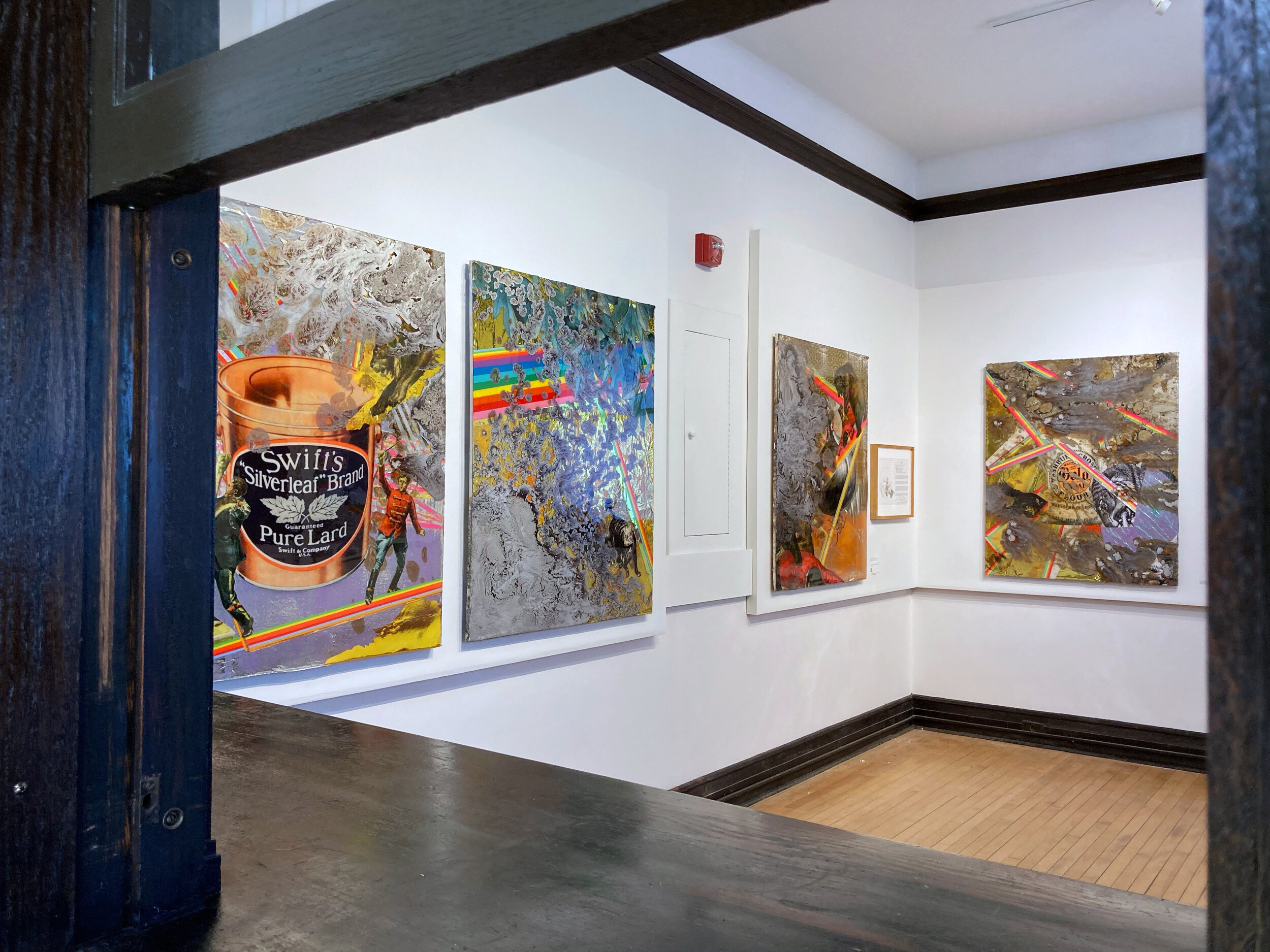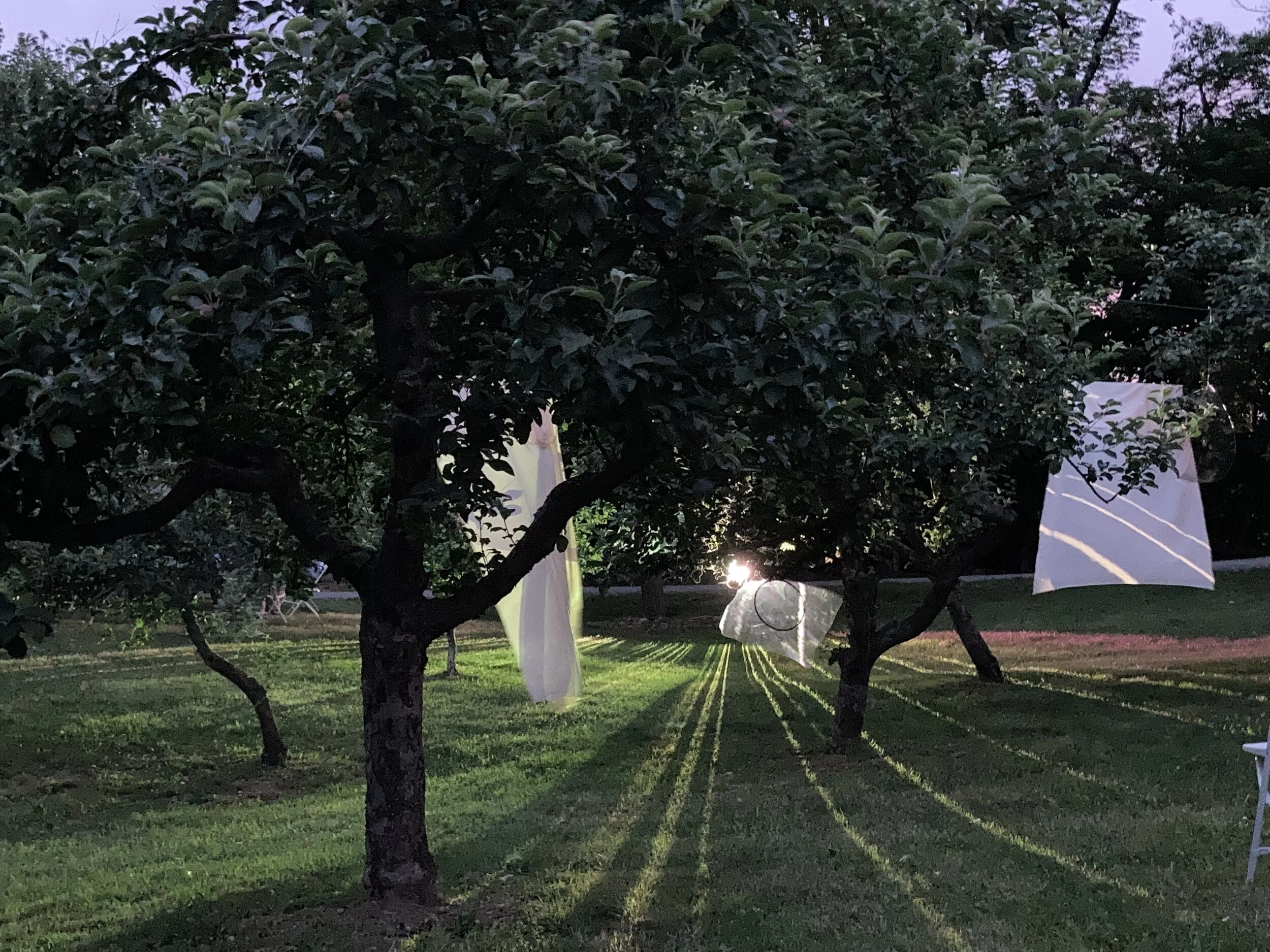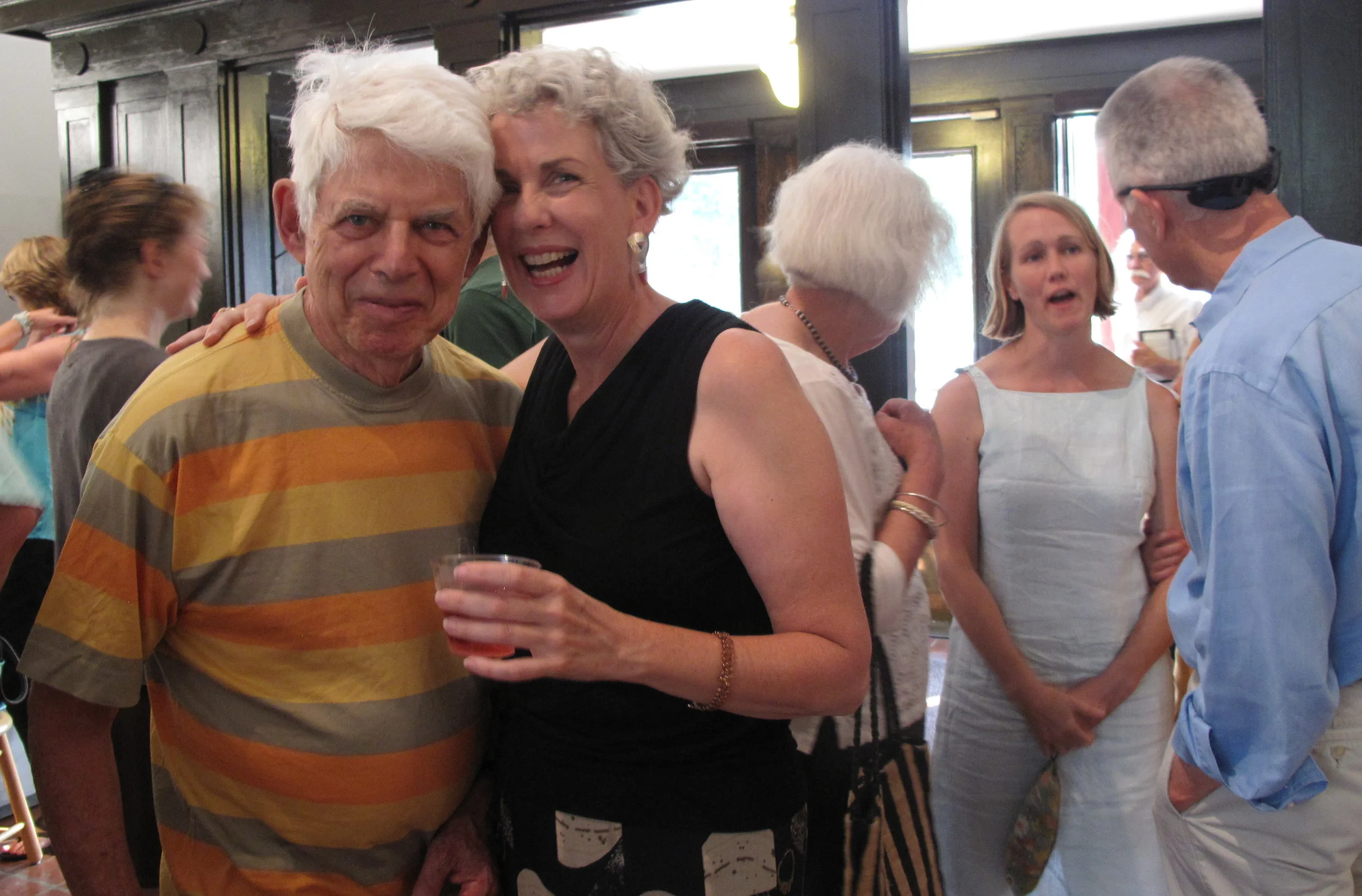“An opening, a way in, a point of connection”
On August 1, 2021 Sarah Freeman, BMAC’s Exhibitions Manager since 2015, took on a new role as Director of Exhibitions. Mara Williams, BMAC’s longtime Chief Curator, will become Curator Emerita at the end of 2021. Sarah spoke with Art Loves Company about her vision for BMAC’s curatorial future and what she appreciates most about the Museum’s rich past.
Brattleboro Museum & Art Center: Congratulations on your new position! What will you be doing?
Sarah Freeman: Thank you! It’s really exciting! My new role expands on the work that I’ve been doing over the past six years: finding new curators to broaden the Museum’s field of talent and welcoming a diversity of curatorial and artistic voices. That was also an important area of focus for Mara Williams in her role as Chief Curator for the past 30-plus years. My role is to build on that work, but I won’t be curating most of the exhibits myself. I’ll be seeking new voices and collaborations, tapping into local, regional, national, and international curatorial and artistic talents. I will also be curating shows from time to time.
BMAC: What are some things you’re excited about in your new role?
Sarah Freeman and artist Gordon Meinhard
Freeman: I’m looking forward to getting to know more about the local art scene and meeting more artists in the area, as well exploring farther afield and strengthening the relationships that we already have in places like New York, Boston, Philadelphia, Providence, and Portland, Maine. I’m looking forward to bringing some of that talent here to Brattleboro. I’ve really been enjoying making studio visits. Seeing people’s work in their studios is so different from seeing it in a museum. It’s very enlightening and sparks some great conversations.
BMAC: What role does diversity play in BMAC’s exhibitions program?
Freeman: Diversity has been and will continue to be a big focus for us in terms of curatorial and artistic perspectives, the types of work we’re showing, and the audiences we’re welcoming to the Museum. I think a lot about how to increase and strengthen our ties with our community. We’ve done that in the past through partnerships with organizations like Groundworks Collaborative, Turning Point of Windham County, Brattleboro Retreat, Out in the Open, the AIDS Project of Southern Vermont, The Root Social Justice Center, and Retreat Farm. We plan to continue to grow those partnerships and others like them.
How can we make the work that we show relevant to all the audiences who visit the Museum? That includes people who walk into our galleries off the street, people who make plans to travel here, school groups, seniors we’re working with at Bradley House and Thompson House. It’s really exciting to be able to connect the dots and bring more and more people here.
BMAC: How would you describe your artistic and curatorial philosophy?
Freeman: The artists and curators whose work I respond to the most are people who are using art as a way of storytelling, processing and examining their place in the world and their personhood. This questioning takes many different forms and creates a lot of different opportunities for conversation and access. For me, one of the most important things is that when people come to the Museum, they understand that whatever their response to the art is, it is valid. Sometimes people think, or are made to feel, that they have the “wrong” answer, or that if they don’t like a certain work of art, they’re getting something wrong. I hope that through all the shows we do, showing different facets of contemporary art, we can offer an opening, a way in, a point of connection for people. I hope that visitors will come away thinking about the art, having an opinion (love it or hate it), wondering about something new, connecting what they’ve seen to their personal experiences.
Installation view of Delano Dunn: Novelties, curated by Freeman.
Many of the curators and artists we’re working with are excited about those ideas and about getting visitors’ feedback on what they’re seeing. We’ve started a program called Ask the Artist through which people can ask questions of exhibiting artists online and here at the Museum. It’s a nice way of connecting Museum visitors to living and working artists who can respond in their own words. That’s a way to help demystify the process and break down the barriers that people sometimes feel when they come to a contemporary art space, which can feel very conceptual and confusing. It allows us to put a human face or voice to the artwork.
BMAC: What has it been like for you working with Mara Williams over the years?
Mara Williams. Photo credit: Kelly Fletcher
Freeman: Mara has mentored me in many different ways. She was one of the first people that I met with when I graduated college and was looking to go into the arts, and she’s been a nurturing and supportive presence in my life for a long time. In my previous role as Exhibitions Manager, I got to see how Mara worked with artists and other curators. I got to be a fly on the wall as she was working. She’s very generous with her time and her expertise. She’s supported a lot of artists, arts professionals, and curators at different points in their careers. I watched her mentor our interns over the years. She did the same with me. She helped me figure out what was the right fit for me in the arts world.
Mara will continue in her role as Chief Curator through the end of 2021. She has several shows that are in progress. She’s also going to keep curating shows from time to time as Curator Emerita. She’ll have time to do some passion projects that have been on her list for years.
Because she’s been with the Museum for so long, she’s seen a lot of changes. When she started out, BMAC was open seasonally and was almost entirely volunteer-run. The space was divided between art and history exhibits. Mara set us on the path to what we have become today. She has brought some big names to Brattleboro. People still talk about many of the shows she’s done, including the Andy Warhol exhibit in 2004. She has also been responsible for showcasing talented artists from our region, and for giving a lot of artists their first museum shows, which is a wonderful way to be of service to artists and help them build their careers.
Sarah Freeman with artists Jennifer Mack-Watkins and Kenny Rivero
We’re going to continue to work with emerging artists of all ages and people who are at crucial stages in their careers. We want to provide a platform for artists who are pushing boundaries and trying new things in their work. Because we’re such a small museum, we have the opportunity to be nimble and experimental. We also want to provide space and recognition for local artists who see BMAC as “their museum.”
We’ve already started working with some wonderful curators—David Rios Ferreira, Elissa Watters, Katherine Gass Stowe, Mildred Beltré Martinez. I’m making plans now for 2023 and beyond and doing a lot of reaching out to more new potential collaborators. It’ll be exciting!
BMAC: The Museum has presented a number of exhibits in recent years focused on social issues, such as addiction and homelessness. Are there social justice topics that you would love to bring into BMAC at some point?
Freeman: Definitely. The two exhibits you mentioned, Steven Kinder: 552,830, which we did in 2020, and If she has a pulse, she has a chance, which was in 2018-19, were both powerful and felt like some of the most rewarding shows we’ve done.
Installation view of Steven Kinder: 552,830
Climate change is definitely top of mind right now, and there are a lot of artists doing incredible work around it. That’s something we’ve already started to dip our toe into, and I’m excited about things that will come to pass through collaborations focused on that. Honestly, there are so many different issues to focus on. Doing exhibits like these is a great opportunity for us to listen to our community and what issues are most pressing to them, and explore how different artists are responding. We’ll continue to be open to partnerships with different organizations that can help push us and give us insight into different issues that we don’t already have.
BMAC: You have several new co-workers, including Kirsten Martsi (Manager of Education & Community Engagement Programs) and Sharon Fantl (Development Manager). Both are in newly created positions. Has that led you to have conversations about new ideas and new ways of working together.
Freeman: Definitely. We’re working on our systems and how our roles overlap. Kirsten and I will be working together a lot on interpretation—making art more accessible both physically and intellectually. Kirsten has been a whirlwind of activity since she started, and I am really excited about all the things she has put in motion. Sharon and I have been talking about finding ways to build our audiences. Because of her extensive experience as a cultural practitioner, Sharon is great at thinking about systems and about the role of the Museum in the community.
It’s an exciting time to be at the Museum, with new people and new energy. It feels like things are heading in a really great direction.
RELATED LINKS
Connecting people to art
A conversation with BMAC’s Sarah Freeman, Exhibitions Manager & Coordinator of Education Programs, November 2019
Thirty years of art and friendship
Wolf Kahn and Mara Williams look back on the past three decades at BMAC, October 2019










